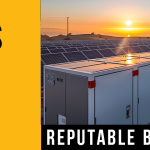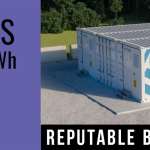 New York State could be on its way to crafting the most aggressive energy storage goal in the country.
New York State could be on its way to crafting the most aggressive energy storage goal in the country.
The target is still a work in progress, but based on Gov. Andrew Cuomo’s (D) recent announcement and interviews with analysts, it could be set above 1,500 MW by 2030.
“I think the target would be higher than 1,500 MW,” Conor Bambrick, air and energy director at Environmental Advocates of New York, told Utility Dive.
California’s energy storage target is 1,300 MW by 2020. In his state of the state address in early January, Cuomo set a target of 1,500 MW by 2025. But 2030 is the target year that will be established by New York’s current energy storage bill, to keep it on the same track as the state’s 50% renewables goal in its Clean Energy Standard.
‘Eye catching’ goal
Cuomo’s 1,500 MW goal is “eye catching,” Dan Finn-Foley, senior storage analyst at GTM Research, told Utility Dive. But “at most,” he said, “it will serve as one input for the Public Service Commission as they begin the process of designing and setting policy around the final target.”
Finn-Foley called the 1,500 MW goal “aspirational,” but noted that “it comes with serious teeth” in the form of $200 million from the New York Green Bank and $60 million from NYSERDA towards energy storage pilots and deployments. “This level of investment has real potential to kick-start the market, though the timing is still up in the air,” Finn-Foley said.
The timing of New York’s energy storage target has been a stop and go affair from the start. The state’s legislature passed a pair of bills last June that directed the New York Public Service Commission to develop an Energy Storage Deployment Program, including a storage procurement target for 2030. The program would be run by the New York Energy Research and Development Authority (NYSERDA) and the Long Island Power Authority (LIPA). Cuomo signed the bill nearly six months later, but with a catch — a “chapter amendment,” which is sometimes used when a bill is passed without executive input.
In a signing memo attached to the bill, Cuomo said his office had “secured an agreement with the Legislature to pass legislation in the upcoming session” that would amend the law. That means the storage legislation will not reach its final form until it is amended by the passage of A8921, which has been introduced and is working its way through the legislative process. The bill is expected to pass soon, according to the office of Representative Amy Paulin (D), one of the bill’s sponsors.
Click Here to Read Full Article
read more
 It’s safe to say battery storage has come to Hawaii after Honolulu County experienced a record-shattering year in issuing permits for solar+storage permits for homeowners and businesses alike.
It’s safe to say battery storage has come to Hawaii after Honolulu County experienced a record-shattering year in issuing permits for solar+storage permits for homeowners and businesses alike. Digital
Digital  Greensmith Energy, a part of the technology group Wärtsilä, has successfully completed two grid-scale energy storage systems in partnership with E.ON Climate & Renewables in Texas.
Greensmith Energy, a part of the technology group Wärtsilä, has successfully completed two grid-scale energy storage systems in partnership with E.ON Climate & Renewables in Texas. Startup Gravitricity, which has just received a £650,000 grant from Innovate UK, plans to use abandoned shafts to house massive weights. When energy is plentiful, the weights will be winched towards the surface, in much the same way that water is driven uphill in pumped hydro storage. However, unlike pumped hydro, the system should be able to respond to fluctuations in demand almost instantly.
Startup Gravitricity, which has just received a £650,000 grant from Innovate UK, plans to use abandoned shafts to house massive weights. When energy is plentiful, the weights will be winched towards the surface, in much the same way that water is driven uphill in pumped hydro storage. However, unlike pumped hydro, the system should be able to respond to fluctuations in demand almost instantly. Tesla has been making big moves on the energy storage market in Australia, but they are now all being dwarfed by this new project that will see them install solar arrays and Powerwalls on 50,000 homes to create the biggest virtual power plant in the world.
Tesla has been making big moves on the energy storage market in Australia, but they are now all being dwarfed by this new project that will see them install solar arrays and Powerwalls on 50,000 homes to create the biggest virtual power plant in the world. Tesla is partnering with South Australia’s Labor government to create the world’s largest virtual power plant, consisting of 50,000 homes fitted with solar panels and the company’s Powerwall 2 home battery unit. The $800 million project will have roughly six times more energy storage capacity than
Tesla is partnering with South Australia’s Labor government to create the world’s largest virtual power plant, consisting of 50,000 homes fitted with solar panels and the company’s Powerwall 2 home battery unit. The $800 million project will have roughly six times more energy storage capacity than  Carbon-free energy: Is the answer blowing in the wind? Perhaps, but the wind doesn’t always blow, nor does the sun always shine. The energy generated by wind and solar power is intermittent, meaning that the generated electricity goes up and down according to the weather.
Carbon-free energy: Is the answer blowing in the wind? Perhaps, but the wind doesn’t always blow, nor does the sun always shine. The energy generated by wind and solar power is intermittent, meaning that the generated electricity goes up and down according to the weather. The first large-scale commercial plant was built in Huntorf in Germany and has now been in successful operation for many years.
The first large-scale commercial plant was built in Huntorf in Germany and has now been in successful operation for many years. In a
In a 



